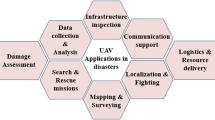Abstract
Historic aircraft trajectory data are valuable resources for various research in the field of air traffic management. With the widespread use of Automatic Dependent Surveillance-Broadcast (ADS-B), these data are relatively easier to obtain. However, there are instances, where the original flight plans that do not contain controller interventions are necessary, such as developing scenarios for Human-in-The-Loop (HiTL) simulations. Even though the air traffic control system keeps records of the flight plan data, they are more difficult to obtain and often are not in the correct format to be applied to simulations. In this study, an algorithm is developed, which can extract the flight plan from recorded ADS-B trajectory and the Aeronautical Information Publication (AIP) that contains all the route and procedure information. The algorithm was validated against HiTL simulation results, where both the resulting trajectories with controller interventions and the original flight plans are available and showed a 98 percent success rate. The algorithms are applied to find the flight plans of about one million flights in the year 2019 that contain trajectory points inside the Incheon Flight Information Region (FIR). This flight plan extraction algorithm will be useful not only for the fast-time or real-time simulations of the air traffic but also for aviation safety-related research areas, where the controller-pilot interactions are important.
















Similar content being viewed by others
References
Doc I (2013) 9750-AN/963 Global Air Navigation Plan 2013–2028. ICAO, Montreal
Planning J et al (2007) Concept of operations for the next generation air transportation system. Technical Report
Consortium S et al (2012) European ATM master plan. Mar-2009
Kang J et al (2019) Safety and workload assessment of lost C2 link on Seoul–Jeju route. J Aerosp Inf Syst 16(4):120–131
Lee H, Park B-S, Lee H-T (2016) Waypoint extraction from recorded ADS-B trajectory data. In: 2016 The Korean Navigation Institute conference
Lee H, Park B-S, Lee H-T (2019) Analysis of alerting criteria and DAA sensor requirements in terminal area. In: 2019 IEEE/AIAA 38th digital avionics systems conference (DASC)
Lee H, Park S-H, Lee H-T (2020) Lost C2 link contingency procedures for Seoul TMA and assessment on safety and controller workload. In: 2020 IEEE/AIAA 39th digital avionics systems conference (DASC)
Lee H-T (2022) Assessment of safety, workload, and delay through HITL simulations for lost C2 link contingency procedure in ICN. In: ICAO WP, RPASP/19-WP/5
Lee H, Lee H-T (2020) Risk analysis of flight procedures at Incheon International Airport and Gimpo International Airport. J Adv Navig Technol 24(6):500–507
Lee H-T, Lee H (2020) Risk analysis of aircraft operations in Seoul TMA based on DAA well clear metrics using recorded ADS-B data. J Adv Navig Technol 24(6):527–532
FlightAware (2021) FlightAware-ADSB. https://flightaware.com/. Accessed 21 Oct 2021
Aeronautical Information Services (2021) Aeronautical information publication (E-AIP). http://aim.koca.go.kr/eaipPub/Package/history-en-GB.html. Accessed 21 Oct 2021
Doc I (2006) 8168 OPS/611 aircraft operations: procedures for air navigation services-volume II construction of visual and instrument flight procedures. ICAO, Montreal
FAA, M (2002) United states standard for terminal instrument procedures (TERPS), change 19
Jang I (2000) Instrument flight procedure of Incheon International Airport. J Aviat Dev Korea 24:62–82
Airportal (2021) Aviation statistics. https://www.airportal.go.kr/knowledge/statsnew/main.jsp. Accessed 21 Oct 2021
Acknowledgements
This work is supported by the Korea Agency for Infrastructure Technology Advancement (KAIA) grand funded by the Ministry of Land, Infrastructure and Transport (Grant 21ATRP-C108186-07 and 22BDAS-B158275-03).
Author information
Authors and Affiliations
Corresponding author
Additional information
Publisher's Note
Springer Nature remains neutral with regard to jurisdictional claims in published maps and institutional affiliations.
Rights and permissions
Springer Nature or its licensor holds exclusive rights to this article under a publishing agreement with the author(s) or other rightsholder(s); author self-archiving of the accepted manuscript version of this article is solely governed by the terms of such publishing agreement and applicable law.
About this article
Cite this article
Lee, H., Lee, HT. Extracting Flight Plans from Recorded ADS-B Trajectories. Int. J. Aeronaut. Space Sci. 24, 581–589 (2023). https://doi.org/10.1007/s42405-022-00539-3
Received:
Revised:
Accepted:
Published:
Issue Date:
DOI: https://doi.org/10.1007/s42405-022-00539-3




